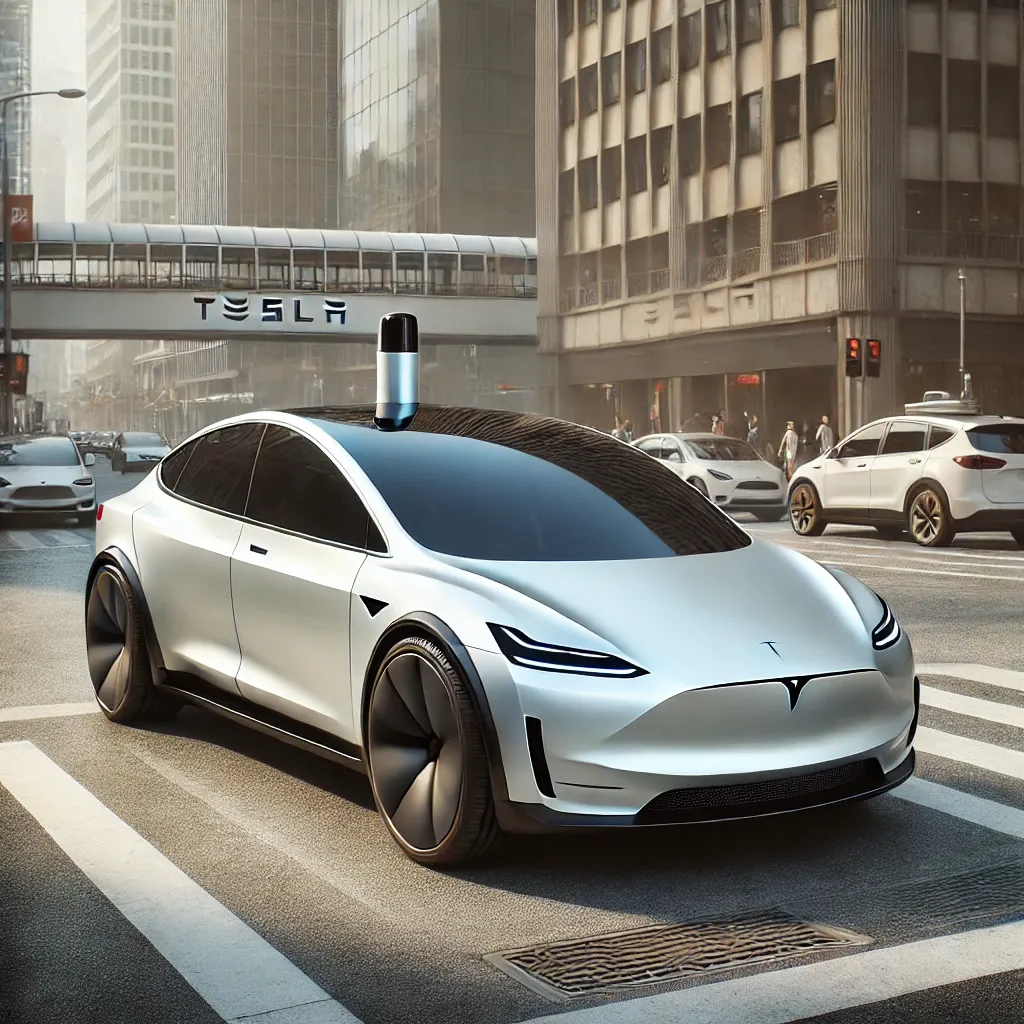Is the Tesla Robotaxi going to change the way we experience transport? What is the latest buzz surrounding its release, and how will Tesla’s business model drive its success? Let’s dive into the latest insights and explore how this autonomous taxi service aims to transform mobility.
Tesla Robotaxi Business Model
Tesla’s Robotaxi concept represents a significant shift from traditional car ownership to a shared autonomous fleet model. The underlying premise is simple yet innovative: Tesla vehicles with Full Self-Driving (FSD) capability will operate autonomously as taxis when not in personal use. This approach blends ownership and ride-hailing, generating passive income for Tesla owners and reducing downtime for cars.
- Decentralized Fleet: Tesla owners can register their cars on the Robotaxi network, contributing to a distributed fleet.
- Cost Savings: Autonomous vehicles reduce labor costs, making Tesla’s service potentially cheaper than Uber or Lyft.
- Revenue Sharing: Tesla plans to offer owners a share of profits, incentivizing participation.
- Environmental Impact: All-electric vehicles promote green mobility with zero emissions.
- Peak Demand Coverage: Autonomous vehicles will automatically adjust routes based on real-time demand, ensuring optimal performance.
Tesla’s business model leverages both technology and crowd participation, reducing overheads and accelerating adoption. The hybrid structure between private ownership and public ride-sharing sets it apart from competitors.
Tesla Robotaxi App
Tesla aims to create an intuitive and seamless experience through the Tesla Robotaxi app, where users will book rides directly from their smartphones. With a focus on user convenience, the app will integrate with Tesla’s ecosystem to offer:
- Real-Time Tracking: Users can monitor the car’s arrival time and route with high accuracy.
- Multiple Payment Options: Support for cryptocurrencies like Bitcoin, in addition to credit cards.
- Familiar Interface: Existing Tesla users will have an integrated experience with their car dashboards and apps.
- Autonomous Scheduling: The app will automate bookings based on user habits and patterns.
- Smart Notifications: Alerts will notify users of updates, including delays or changes in routes.
Tesla’s app strategy emphasizes ease of access and efficiency, building trust in the early stages of autonomous mobility adoption.
Tesla Robotaxi News
The Tesla Robotaxi launch has experienced multiple delays, as reported in recent updates. Originally hinted for an earlier release, the autonomous service has been postponed due to technical and regulatory challenges. However, new developments suggest testing may begin in select markets, such as China and the U.S., by late 2024.Tesla’s approach to FSD technology has also sparked debate. While other autonomous competitors rely heavily on LiDAR (Light Detection and Ranging) for navigation, Tesla insists on using cameras and AI algorithms for decision-making. This camera-only strategy has drawn criticism but aligns with Tesla’s long-term vision for scalable, cost-efficient autonomy.Latest reports indicate that Tesla may host an exclusive event in October to unveil the Robotaxi. Some speculate that the event will coincide with other Tesla updates, including new software for autonomous driving.
- Testing Expansion: Trials could begin in densely populated cities to refine the system’s behavior in complex traffic environments.
- New Features: Tesla may announce updates to the FSD package, improving vehicle control and safety metrics.
- International Expansion: China has been identified as a priority market for Robotaxi rollout.
- Ongoing Regulatory Challenges: Tesla continues to collaborate with local governments to meet legal requirements for driverless services.
- Positive Sentiment Among Investors: News about the upcoming launch has positively impacted Tesla’s stock, reflecting strong market anticipation.
Tesla’s Robotaxi project represents both technological promise and strategic ambition. Although challenges remain, the company is steadily moving toward redefining public transport.
Conclusion
Tesla’s Robotaxi initiative combines cutting-edge technology, innovative business models, and ambitious goals to create a new mobility paradigm. The combination of shared ownership, autonomous driving, and app-based convenience offers a glimpse of the future of transport. However, regulatory challenges, delays, and competition from LiDAR-based solutions are obstacles Tesla must overcome. As Elon Musk famously said, “The only way to predict the future is to create it.” With the Robotaxi, Tesla is attempting to do just that.Whether the Robotaxi will revolutionize the world of transportation remains to be seen, but the journey toward that vision is undoubtedly captivating. Keep an eye out for the October event—it could mark a milestone in the evolution of autonomous driving.






